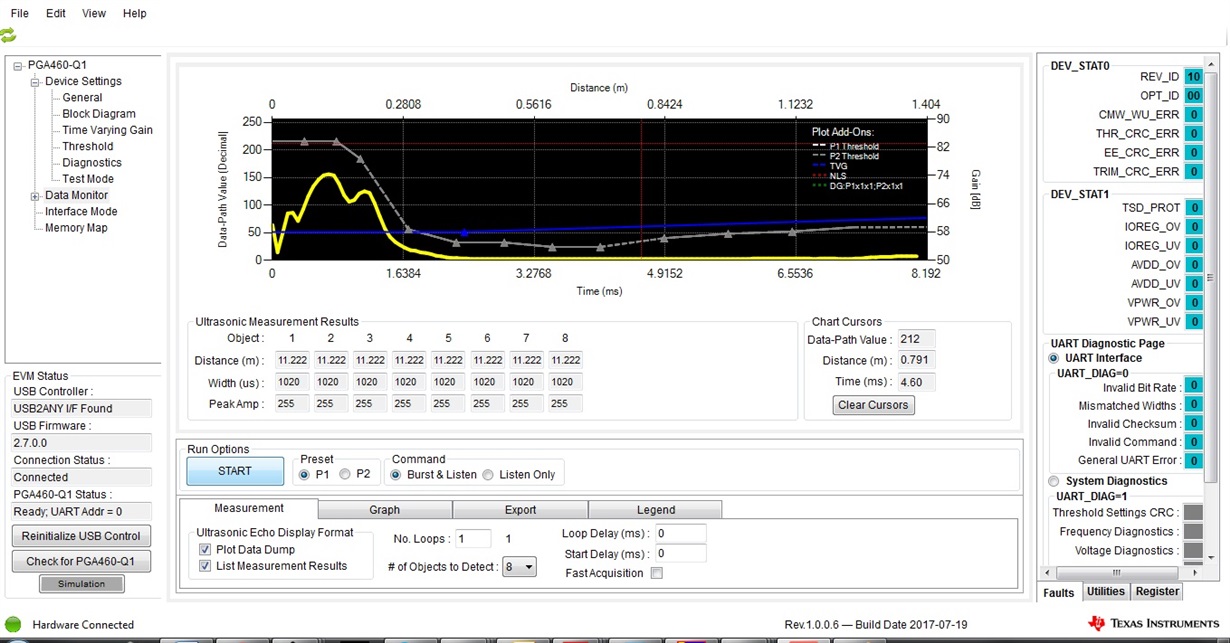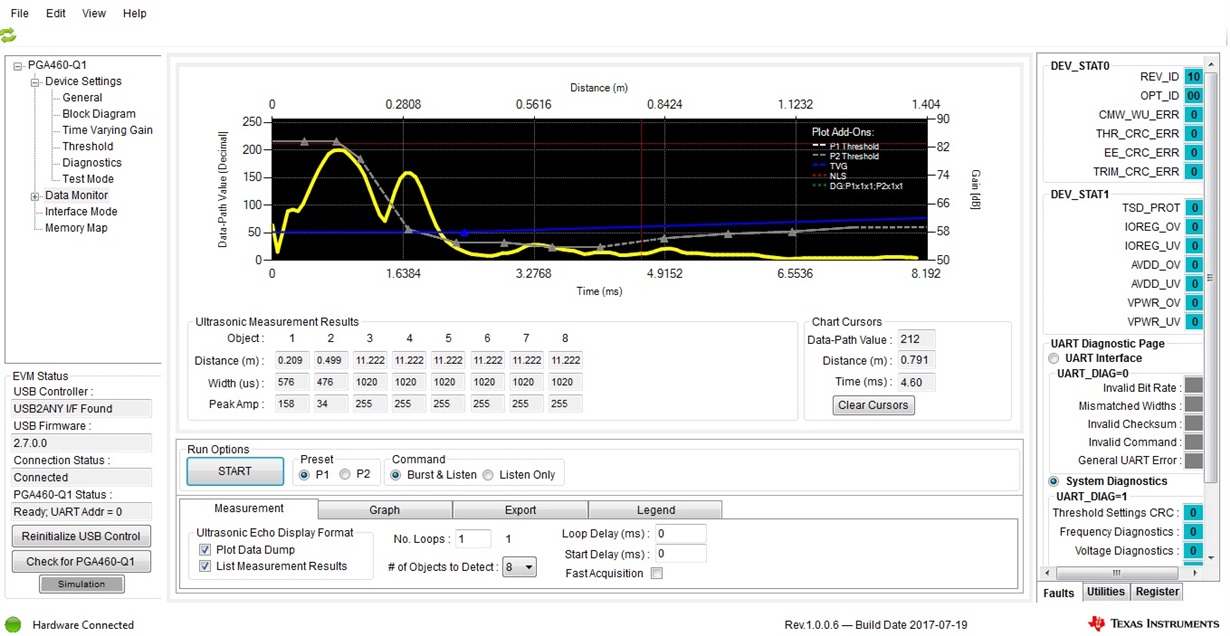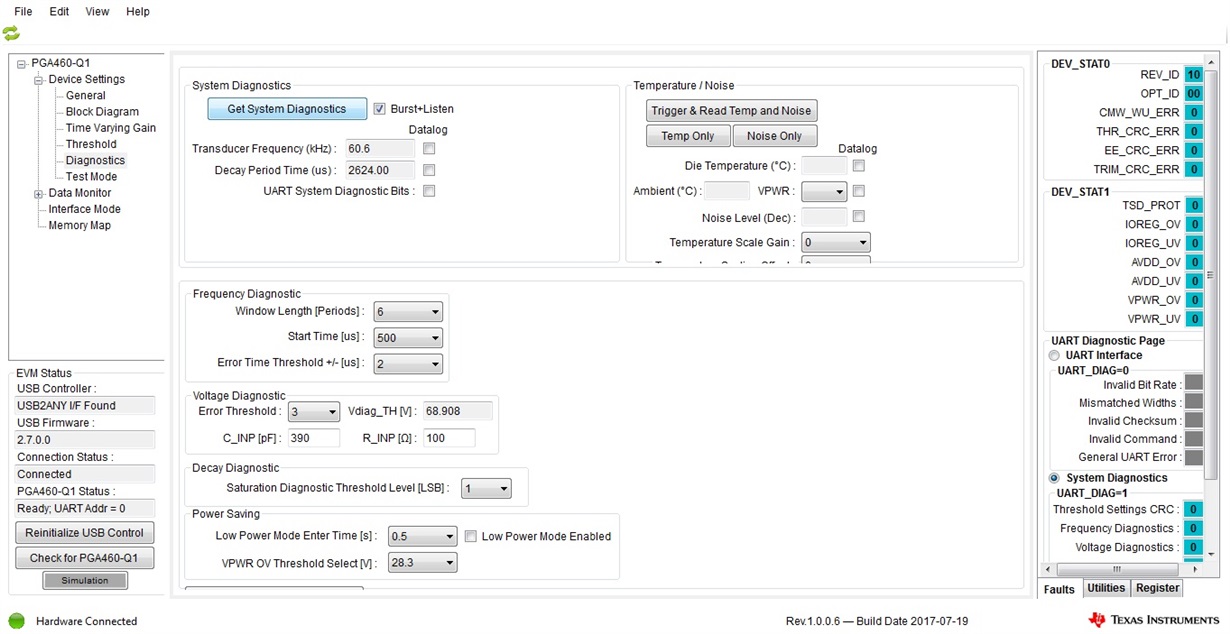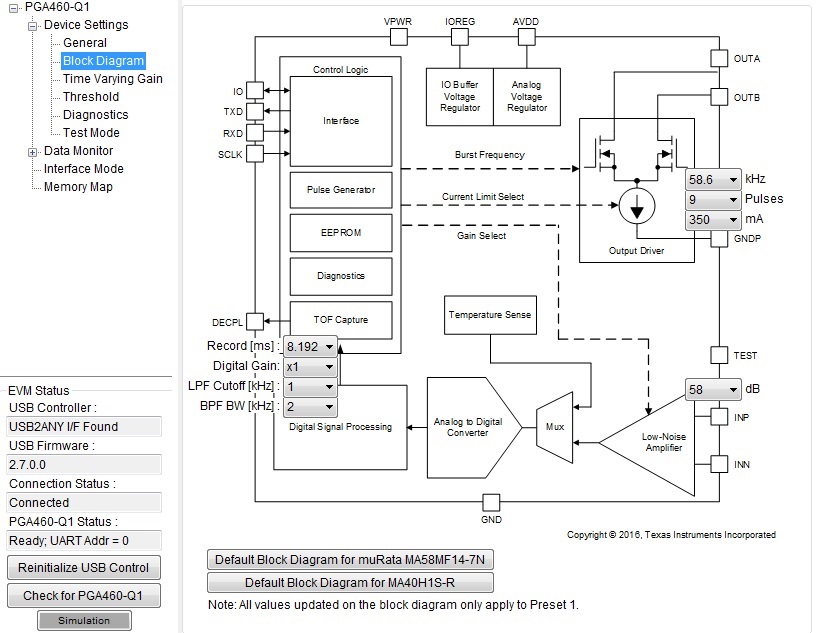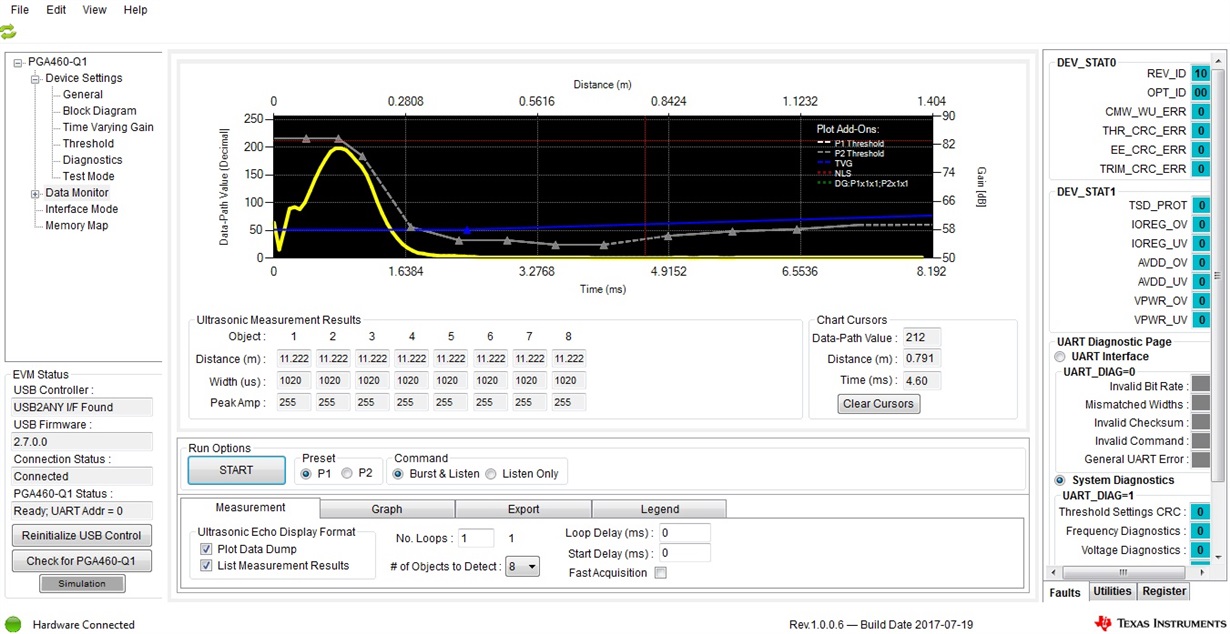Hi,
I am trying to develop an object detecting device with IP65 enclosure. Inside the enclosure BOOSTXL-PGA460 and ultrasonic sensor is placed, and following settings are updated in GUI block diagram.
Center Frequency : 58.6 kHz
Burst pulses : 14
Current limit : 350 mA
AFE : 66 dB
BPF BW : 4 kHz
LPF cutoff : 2 kHz
Digital Gain : x2
Record : 36.864 ms
TVG set for long predefined value.
1) Inside the enclosure i was not able to detect the objects (no echo return was detected). should i change any settings value
2) Object detecting device is for outdoor purpose, so if any leaf or paper falls on the device will it affect the sensor's object detection capability.
Can you help me with this issue.
Thanks and Regards,


